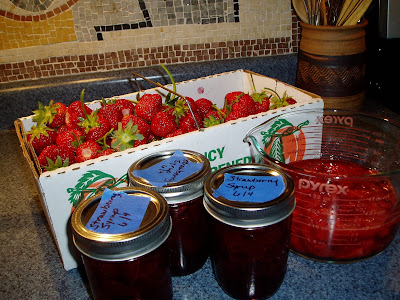
I sold the remaining two chickens shortly after Batgirl died. We got an offer on our house from the very first guy who toured it at our very first (and only) open house. So I knew I had to find new homes for the chickens. (We’ll be staying at an apartment while we plan and build our next home.) For some reason, it seemed easier to do after Batgirl died. Kind of like ripping the rest of the band-aid off quickly.
Their departure has left a hole in my life. I had them for just a year plus a few weeks, but they managed to thoroughly integrate themselves into my daily routine. First thing in the morning, I’d look out my bedroom window while I was pulling on my jeans to see what they were up to. Then I’d bring them their morning greens and fresh water.
Now there are no little chickens to greet me enthusiastically in the morning. Nothing to see when I look out the window, except a big wound in the garden where their coop (now sold) once stood. No real motivation for digging the big dandelions that emerged after all the rain last week out of the lawn – because there is nobody to get excited about them and gobble them down voraciously. When I step out the back door to snip a few herbs for cooking, no little birdies start squawking and banging their beaks on the wire of their cage, hoping to be let out. No eggs to collect and marvel over. “How many today?” we’d ask each other. We had five dozen in the fridge when they went away.
I miss them, but I hope they’re enjoying a better life – meaning more space – in their new home. At least that’s what the guy who bought them promised.
The photo above is a good representation of what I imagined having chickens would be like. They’d be an attractive garden feature, wandering through the yard, their gorgeous feathers contrasting beautifully with the foliage and flowers of the garden. They’d not only produce eggs for us to eat and manure for the garden, they’d be living “lawn ornaments”.
Of course, the reality is that they would tear up the garden in a heartbeat if I let them run free. They’d eat what I didn’t want them to eat, dig huge holes all over the place, and drop their uncomposted manure everywhere.
I took that photo of Amelia a few days after Batgirl died. I was tending the remaining chickens, but distracted by thoughts of Batgirl. In my absentmindedness, I failed to close the door to the pen all the way when I came in, and Amelia quickly ran out. It took me more than an hour to catch her, but truthfully, I wasn’t trying very hard that whole time. I was observing her and snapping a few photos. My fantasy had been that, shortly before we moved out of this house, I would fling open the door to their pen and let them all run free in the garden for a day.
Long-time readers of this blog will recall that I have struggled with the problem of having to keep the chickens penned and wanting to give them the space and freedom all living creatures seek. Our goal at our new place is to have enough land to give them just that; to allocate a large area for them to run outside, chase bugs, dig worms, eat what foliage they desire, and generally live the good chicken life.
So while I miss my chickens, I try to imagine them enjoying a life in the country, and look forward to giving our next chickens the same benefits after we move. It’s hard, however, not just to give up the chickens, but to leave the garden. I thought it would take much longer to sell the house, that I’d have one last summer to enjoy what’s shaping up to be our best garden yet.

Already we have harvested pounds and pounds of strawberries. They’re larger than the ones I grew a couple of years ago in the planter boxes and much juicier and more flavorful than the ones you buy in the grocery store. So far, I have canned seven jars of jam, 4 jars of strawberry syrup, and Rick has frozen two quarts of whole berries. Plus we have eaten many and given some away. Last evening he came in with that half peck box overflowing with yet more strawberries – and they’re still coming! All from an $8 package of strawberry roots I bought last spring.
The sweet potatoes I over-wintered survived and transplanted well, the potatoes are going gang-busters, and the tomatoes I started from seed in the house are my biggest and strongest seedlings yet. But I have to look to the future – to having more space for both chickens and garden, as well as a more energy-efficient home.
My last post for this blog will be up early next week. In it, I’ll detail the reasons why I feel it so important for all of us to get going on growing more of our own food. I’m taking my time with it because I want to provide plenty of links to other articles. I’ve been steeped in this stuff for six years, but some of the issues may be new to some people. So I want them to be able to read more about it if they’re interested. Look for the post on Monday or Tuesday.












